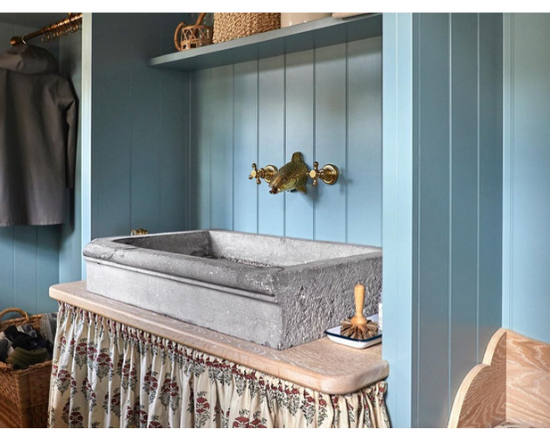When it comes to bathroom design, one trend has truly stood the test of time and continues to captivate homeowners and designers alike: freestanding baths. These elegant and luxurious fixtures have evolved from their historical roots to become a focal point in modern bathrooms. In this article, we will explore the enduring trend of freestanding baths, their history, design versatility, and why they remain a beloved choice for homeowners seeking both style and functionality in their bathrooms.
A Glimpse into History
The history of freestanding baths dates back to ancient times when they were primarily crafted from stone or wood. These baths were a symbol of opulence and were reserved for the elite. The Roman Empire, in particular, embraced the concept of communal bathing in grand structures like the Roman Baths in Bath, England, and freestanding baths were central to this culture.
Fast forward to the 19th century, and the freestanding bath experienced a resurgence in popularity, thanks to advancements in plumbing and manufacturing. Clawfoot tubs, with their ornate feet, became an iconic fixture of Victorian-era bathrooms. These tubs were often seen as a status symbol and a testament to one's social standing.
The Modern Renaissance
In recent years, freestanding baths have experienced a resurgence in popularity. They have evolved beyond their traditional clawfoot designs to incorporate contemporary materials, shapes, and finishes. Homeowners and designers are drawn to these fixtures for several compelling reasons:
-
Visual Appeal: Freestanding baths instantly become the focal point of any bathroom. Their sculptural presence adds an element of artistry and luxury that enhances the overall aesthetic of the space.
-
Design Versatility: Freestanding baths come in a variety of shapes and sizes, from classic oval and rectangular to more avant-garde designs. This versatility allows them to fit seamlessly into various bathroom styles, from traditional to modern.
-
Space Efficiency: Unlike built-in tubs, freestanding baths require less wall space, making them an excellent choice for smaller bathrooms. Their open design can create a sense of spaciousness in tight quarters.
-
Ease of Installation: Installing a freestanding bath is often less complicated than building a tub surround, which can reduce labor costs and installation time.
-
Customisation: Homeowners can choose from a range of materials, including acrylic, cast iron, stone, and even modern composite materials. This variety allows for customisation to match personal preferences and bathroom decor.
-
A Relaxing Experience: Freestanding baths typically offer a deeper and more immersive soaking experience, allowing for a truly indulgent bathing ritual.
-
Increased Property Value: Freestanding baths are seen as a premium feature in homes, which can potentially increase the resale value of a property.
-
Timeless Appeal: Despite their modern adaptations, freestanding baths have an enduring appeal that transcends trends, ensuring they remain a valuable addition to any bathroom.
Incorporating Freestanding Baths into Your Bathroom
When considering a freestanding bath for your bathroom, it's essential to think about the overall design and layout. Here are some tips for a successful integration:
-
Placement: Choose a strategic location that allows the freestanding bath to take center stage without overcrowding the space.
-
Fixtures and Accessories: Complement your freestanding bath with well-chosen fixtures, such as floor-mounted taps and a stylish floor drain. Consider adding a decorative tray or shelf nearby to hold bath essentials.
-
Lighting: Proper lighting can enhance the ambiance around the freestanding bath. Consider pendant lights or wall sconces to create a cozy, inviting atmosphere.
-
Flooring: Select flooring materials that can withstand water exposure and create a cohesive look with the bath's design.
-
Privacy: If privacy is a concern, consider installing a decorative screen or a low wall to create a partition between the bath and the rest of the bathroom.
The trend of freestanding baths in bathroom design is a testament to the enduring appeal of these luxurious fixtures. From their historical origins to their modern-day adaptations, freestanding baths continue to captivate homeowners and designers with their visual charm and functional benefits.
Whether you're seeking a timeless addition to your bathroom or a statement piece that exudes luxury, a freestanding bath remains a top choice for those who value both style and relaxation in their home spaces.
Most Popular

Insider Interview #7: Emilie, Emilie Fournet Interiors
By Kate Editor
Insider Interview #6: Emma Deeley, Tythe
By Kate Editor
Why You Should Choose Solid Brass For Your Bathroom Fixtures
By Áine Bennett






